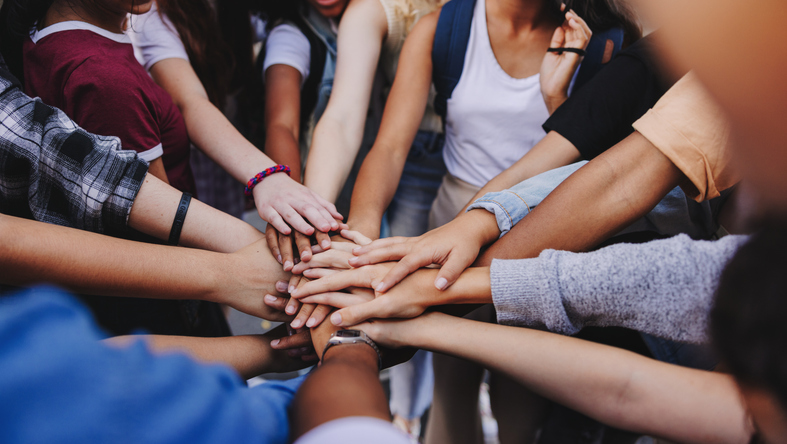Women and girls within the changing climate - navigating risks and monitoring gender equality
15.04.2025
In honor of International Women’s Day on 8 March, the WGEA Secretariat published a podcast ‘Women and girls within the changing climate: navigating health risks and environmental inequities’. Discussing these topics were Jemimah Njuki from UN Women, Katja Pellini from Plan International Finland and Lara Ognibene from the Secretariat of the Minamata Convention on Mercury.
In the episode, the central perspective highlighted by all the guests was that climate change is not gender-neutral. It disproportionately affects women and girls. As explicitly highlighted by Jemimah Njuki and Katja Pellini, climate change exacerbates existing inequalities. Consequently, women and girls are exposed to greater hardships, as the effects of climate change are seen increasing. These hardships can take place in the form of displacement, food insecurity, poverty and increased gender-based violence. It is important to note though, as Katja Pellini puts it, that those who are already in vulnerable situations are the ones most impacted. Hence, gender is a factor, but it is not the only one.
Monitoring gender equality
In terms of monitoring, Jemimah Njuki gave an example from UN Women, where gender transformative climate action and women’s empowerment in the blue and green economies are measured as one of the ten critical areas in which they work. At the policy level, UN Women monitors how women are included in decision-making processes around climate change, and how countries reflect gender equality in nationally determined contributions, which countries submit to the United Nations. Operationally, UN Women monitors women's access to climate adaptation technologies, allocation of new job opportunities for women in sectors of low-carbon economies, and women’s unpaid care work as part of monitoring SDG5 on gender equality. Additionally, UN Women also calls for gender-responsive climate finance. Katja Pellini also urges auditors to ask questions on where funding allocations go, and whether these allocations reach community-based organizations and women- and girl-led groups.
Funding should also target the administrative level, where people have a say on what climate adaptation measures are suitable for each context. An intersectional approach, combining expertise from different fields, can also be useful in conducting gender analysis. In their next program, Plan International Finland will do a conflict sensitivity analysis together with climate risk and gender analysis making use of the intersectional approach. The results are hoped to be positive in terms of implementing integration measures.
Mercury exposure as a specific environmental and health risk affecting women
One environmental and health risk disproportionately affecting women is exposure to mercury. Mercury is a metal that is used in manufacturing everyday objects and is released to the environment from many sources. Discussing the exposure of women to mercury and alleviating the risks of this was Lara Ognibene. Ognibene highlighted that the major sources of mercury exposure include artisanal and small-scale gold mining. 4-5 million women and children are engaged in these mining activities in areas such as South America, Africa, and Asia. Poverty drives many women into mining, increasing their risk of mercury exposure.
Mercury poses significant health risks to women, for example causes hormonal disorders, affects fertility, and contributes to health issues like breast cancer. In maternal blood, mercury can harm the fetus. Mercury is also used in skin-whitening products, which are used by (not only) women. To address gender-specific issues in climate action plans, countries should tackle social issues leading to mercury exposure, introduce mercury-free technologies and support women in agriculture and other livelihoods so they would not turn to unsustainable practices to earn their living.
Norms upholding gender roles
In the episode, gender and social norms are also brought up as a factors that relate to women and girls’ position within the changing climate. This means that in many regions, women are primarily responsible for securing food and water, for example. Women will have to work harder to obtain these resources in the changing climate, within periods of drought or heavy rainfall, which can lead to girls having to leave school to help in domestic work. According to Pellini, discriminatory gender and social norms also mean that women and girls face discrimination in relation to others.
Mercury contributes a concrete example of social constructs accounting to health risks disproportionately affecting women. The Minamata Convention on Mercury mandates parties not only to eliminate mercury from skin lightening products but also to discourage constructs that promote use of skin whitening practices. The conference of parties of the Convention welcomed a gender action plan to promote gender equality, providing a blueprint for mainstreaming gender and working towards equality through specific activities.
In essence, Pellini’s take on solving the problems that we face and provide solutions is a great one. She highlights that the key is to value different ways of knowing, and increase the representation of different groups in decision-making. For that we need gender equality.
In case you have not already listened to the latest podcast episode of the WGEA, you can do so in Youtube or Spotify.

 Photo: GettyImages / jacoblund
Photo: GettyImages / jacoblund

